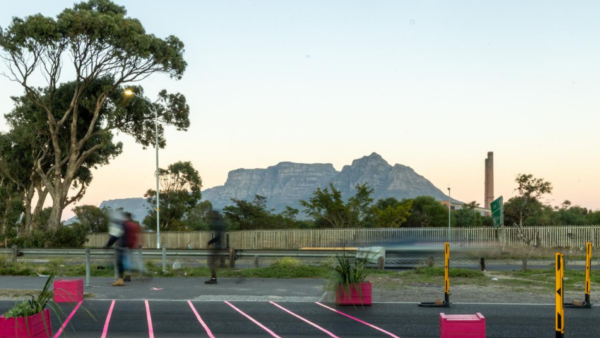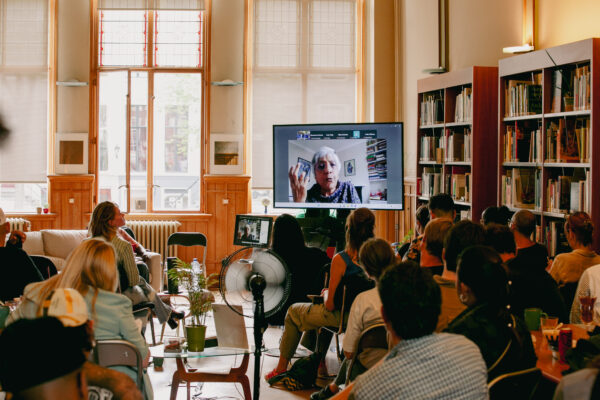

The importance of international collaboration
Internationalization has been a key objective of the Creative Industries Fund NL since its inception in 2013. By means of the Grant Programme Internationalization and its replacement in COVID-19 time, the Temporary Procedure for International Collaboration (TPIS), the Fund offers support opportunities to makers and designers to enable and continue collaboration with international partners. Commissioned by the Fund, Joanna van der Zanden, curator en advisor, has conducted a study under applicants to the Grant Programme Internationalization into the effects in recent years on the design sector. She has also investigated the need in the field and the effect of COVID-19 for international cooperation.what is the importance of internationalization for the design field?
8 June 2021
Joanna van der Zanden: 'First of all, I would like to mention that all the interviewees and respondents were extremely positive about the Internationalization programme. In general, you can say that it is good to be able to question the culture that has built you, and that is achieved better by operating internationally. In order to stay sharp, the entire field – makers, researchers, producers and intermediaries – needs this international context. Dealing with and learning from cultural differences and working on a different scale and within other locales provide new insights that strengthen the field artistically and feed its innovative power. Sometimes these insights lead to a transformational change of direction in one's own practice, and sometimes to a surprising collaboration or new assignments. What most interviewees and respondents agree on is that they could not have developed their design practice as successfully without the international experience. We need international exchange to continue nurturing the artistic and innovative power of the Dutch design field. In addition, international investment of time and resources also pays off in our own country. Anyone who stands out internationally enjoys greater prestige, media attention and opportunities in the Netherlands: ranging from a purchase of work by a museum to a chair at the university.'
were any differences observed per discipline?
Joanna: 'The need for internationalization is partly felt because the Netherlands for many designers is too small a country to build up a flourishing practice. For example, the assignment market is too small for designers. Starting designers and younger brands in particular benefit greatly from the support of a presentation at a fair or festival abroad. Mediating parties are often mentioned as indispensable because their knowledge of the international or local market and their network are of great importance for successful follow-up steps. Architects, researchers and landscape architects often indicate that the experimental scale in the Netherlands is too small. There is a need for research and pilot projects that explore themes such as circular energy, sustainable water supply, self-sufficiency and housing issues, and that is not always possible in the Netherlands. The field is too small for makers within digital culture. Digital culture is an international network, people seek each other out and stimulate and develop the discipline jointly. Without presentations and collaboration abroad, you can't build a career as a maker.'
Recognizing the differences opens up equality in collaboration. This is where the challenge lies.'
where do the challenges lie?
Joanna: 'The criticisms about the objective of internationalization stem from the observation that an overly convinced and complacent attitude about one's own qualities can get in the way of exchange and undermine local sensitivity. A deep awareness of one's own background and privileges are important for a good relationship. Although Dutch design is still highly regarded internationally and opens many doors, it would be good if people were to name what they are less good at. What makes you curious? What do you want to learn? The challenges that designers can contribute to are the same worldwide, but the contexts differ, however subtly. It is from these differences that the field can learn. Recognizing the differences opens up equality in collaboration. This is where the challenge lies. Because really getting to understand each other takes time. Support is needed for projects and programmes that span longer periods of time or are allowed to go through different phases. There is also a need for more residencies abroad. These are plentiful for visual artists but scarce for the design field.'
what have been the most startling effects of COVID-19 on international collaboration according to the respondents?
The study took place partly in the middle of the pandemic. When asked whether they thought international collaboration would be permanently changed by COVID-19, 96% of respondents answered in the affirmative.
Joanna: 'In addition to the direct negative economic effects of COVID-19 due to the disappearance of festivals, fairs and presentations, the lack of physical contact was often mentioned. This is precisely what is so important for a good exchange and understanding. It is also more difficult to build relationships and networks during this period. Many contacts made during fairs and festivals arise spontaneously, by chance. That is missing now. However, positive effects of this situation were also mentioned. The process is quicker and solutions can be found more quickly with the foreign partner. Explorations in collaboration also turn out to be perfectly possible online. And with the help of more local people, building presentations can also be done remotely. In economic terms, a number of respondents have seen growth in online sales and new sales markets as a result. Furthermore, the past year has proved to be a period of innovation, for instance looking for other presentation possibilities and setting up fairs. This is quite a challenge, and for a number of respondents it will mean the end of an existing business model for now, but the questions will stimulate the development of new possibilities. How do you convey the physical well virtually? What can the constructive utilization of Virtual Reality or Augmented Reality mean for international exchange? And how do you interact with the audience from a distance?'
The study asked about choices related to sustainability and internationalization – what were the responses?
Joanna: 'More than 90% of the respondents are open to making sustainable choices, or are already doing so. People want to fly less and travel by train more, including outside Europe, and when they are abroad, they want to stay there longer or combine several trips. We're moving to digital first, travel light and stay longer.'







